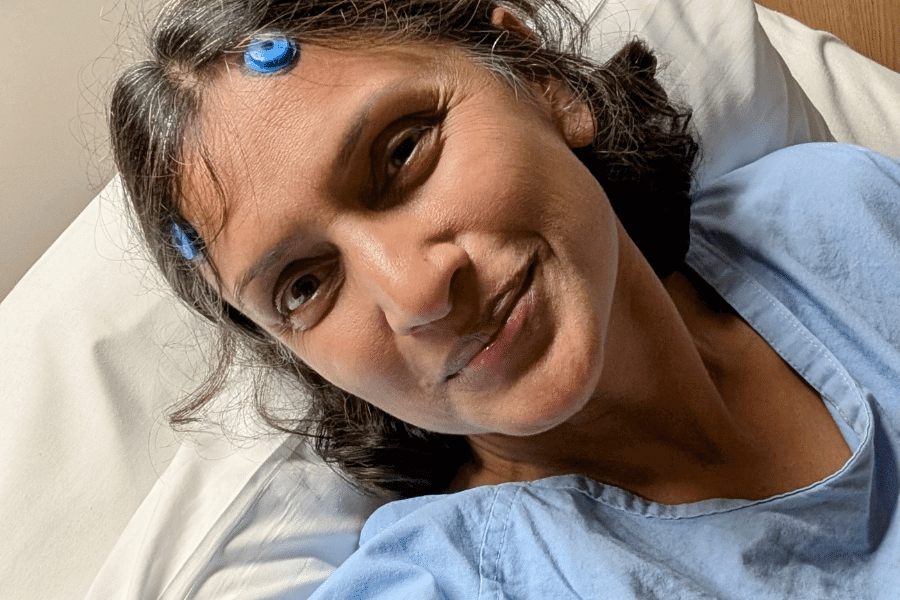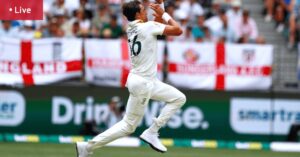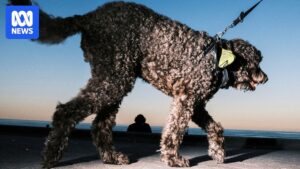
On the morning of March 4, 2025, I found myself on a hospital bed with wheels, gliding through the Neurological Department of Melbourne Private Hospital. It was 8 a.m., and despite the nervous flutter in my stomach, I felt a sense of calm readiness. As I was wheeled into the anesthesia room, my anesthetist joked about me being her first case of the day. I laughed, responding, “Then you’ll never forget me.” Moments later, I entered the operating theatre, surrounded by the quiet blinking of machines. I closed my eyes, and then, nothing.
Where It All Began
This journey began in May 2024, not with a step, but with a whisper in my soul that said, “It is time.” Relentless headaches had become my daily reality, creeping in like waves eroding a shoreline. These were not just symptoms; they were messages. An urgent MRI revealed a 6 cm arachnoid cyst in my brain, accompanied by two other complications. I was advised to head straight to the emergency room.
On May 28, I was admitted to Monash Emergency, marking my first hospitalisation. Neurosurgeons presented me with two stark options: undergo high-risk brain surgery or adopt a “wait and watch” approach. Seeking second opinions, I encountered fear and rejection, until a compassionate neurosurgeon confirmed the necessity of surgery. The risks were significant, both in proceeding and in delaying.
By the Numbers: Arachnoid cysts are rare, occurring in approximately 1% of the population, often requiring surgical intervention when symptomatic.
The months that followed were a balance of hope and uncertainty. PET scans ruled out cancer and Moyamoya disease, but three diagnoses remained: occipital cyst, two brain aneurysms, and carotid artery dissection. Amidst this, grief struck as my elder brother passed away suddenly in November. Our 25th wedding anniversary became a quiet memorial, as we replaced celebrations with prayer and reflection. Worn down by sorrow, I postponed the surgery initially planned for early January.
Preparing for the Inevitable
By late January, pain dictated readiness. We rescheduled the surgery for March 4, 2025. In the weeks leading up to the operation, I anchored myself in daily rituals, visualising rays of peace dissolving my illness. Walking barefoot on grass, I found strength in unexpected encounters with strangers. As an ambassador for a brain rewiring program, I shared my journey through posts and paintings, small acts of healing for others and myself.
A week before surgery, friends created a WhatsApp group called “All the Best Vineeta,” showering me with messages of love and encouragement from around the world. They organised meals for my family, ensuring we were cared for. Surrounded by kindness, I felt ready, carrying a heart full of blessings.
The Day of Admission
On March 3, I hugged my children goodbye and, with my husband, took a contemplative walk. By 2 p.m., we arrived at the hospital, where a private room awaited. My neurosurgeon arrived, and we shared a laugh. That night, unable to sleep, I drew and chatted with friends. At 4 a.m., I whispered, “My adventure begins.”
At 6 a.m., I showered, changed into my gown, and set my WhatsApp photo to Lord Shiva. I hugged my husband, whispering, “Don’t worry. I’ll be back soon.” Then came the corridors, the smile, the machines, and then, nothing.
Waking Up to a New Reality
At 3 p.m., I awoke in the ICU. My neurosurgeon was there, smiling. “How are you?” he asked. “I’m fine,” I replied. “How are you?” The surgery had gone well. My husband arrived, eyes gleaming with relief. “You did it,” he said.
Pain followed, deep and sharp. The initial painkillers made me sick, prompting a change in medication. Despite the discomfort, I smiled and prayed for others in the ICU. The next day, I walked—a small, stubborn triumph.
By the Numbers: Recovery from brain surgery varies, with many patients taking weeks to regain full strength.
Returning Home and Embracing Life
On March 6, just two days post-surgery, I walked into my home. By Day 5, I had stopped strong painkillers. Day 6 saw me return to the park, and by Day 8, I resumed tutoring. Two weeks later, I had 21 staples removed from my 15 cm scar, each one a silver badge of survival.
Though I still carry some “uninvited guests” in my brain, I no longer see them as threats. This journey didn’t break me; it sculpted me. I was cut open, but I healed within. Through it all, I kept flowing.
Read More: Healthy, active, non-smoker: Jaswant Kaur’s lung cancer shock





